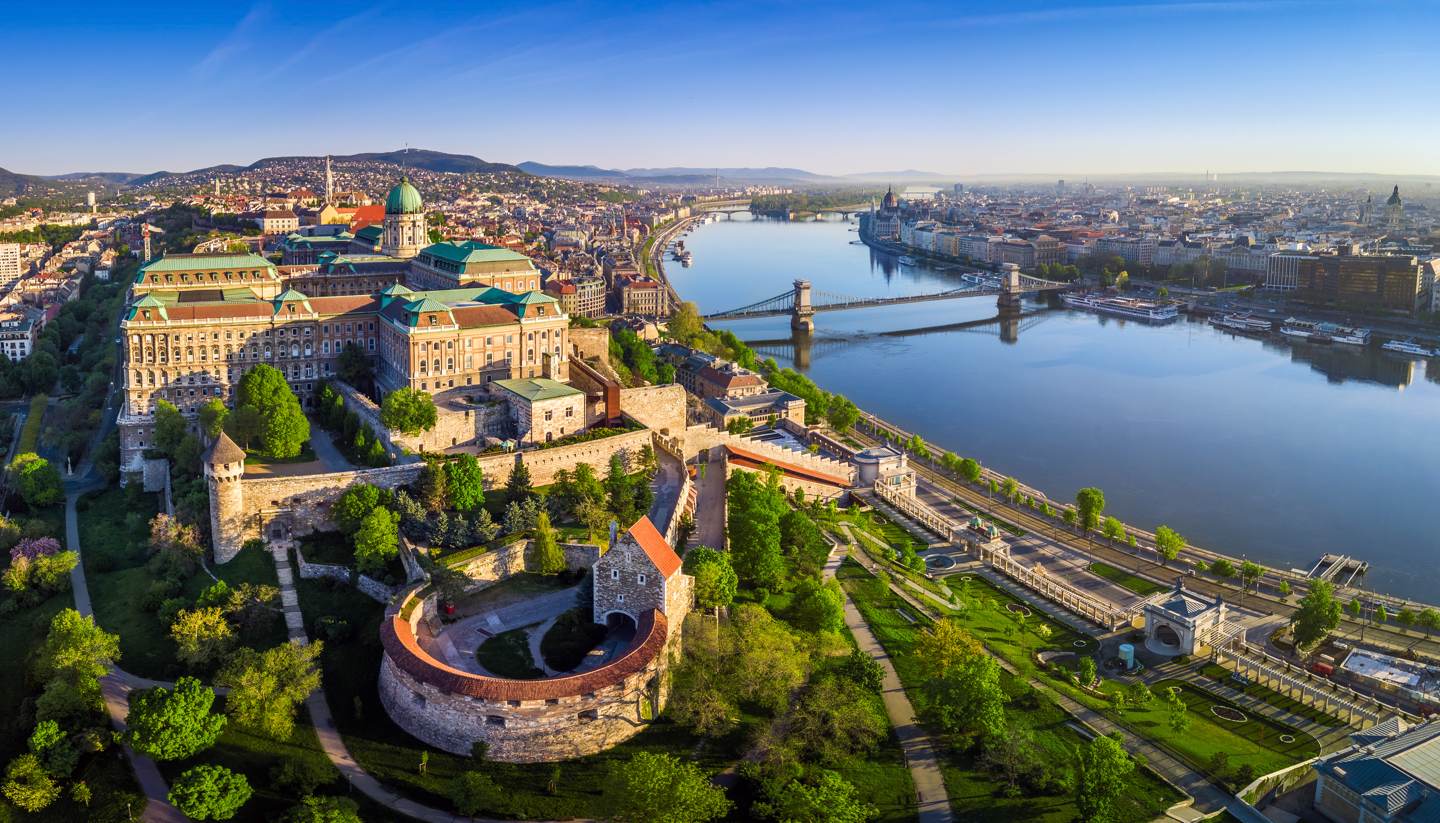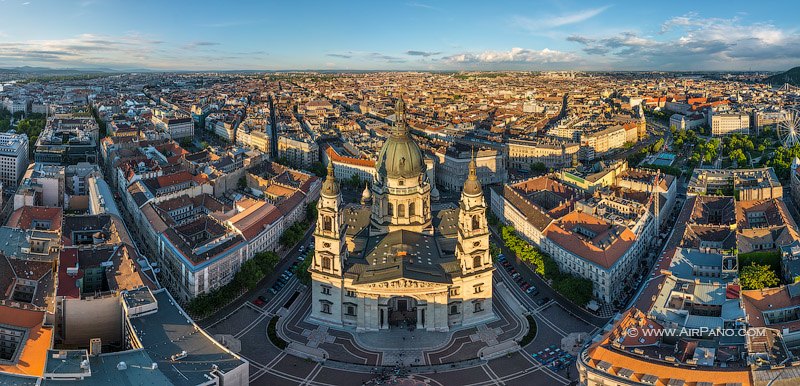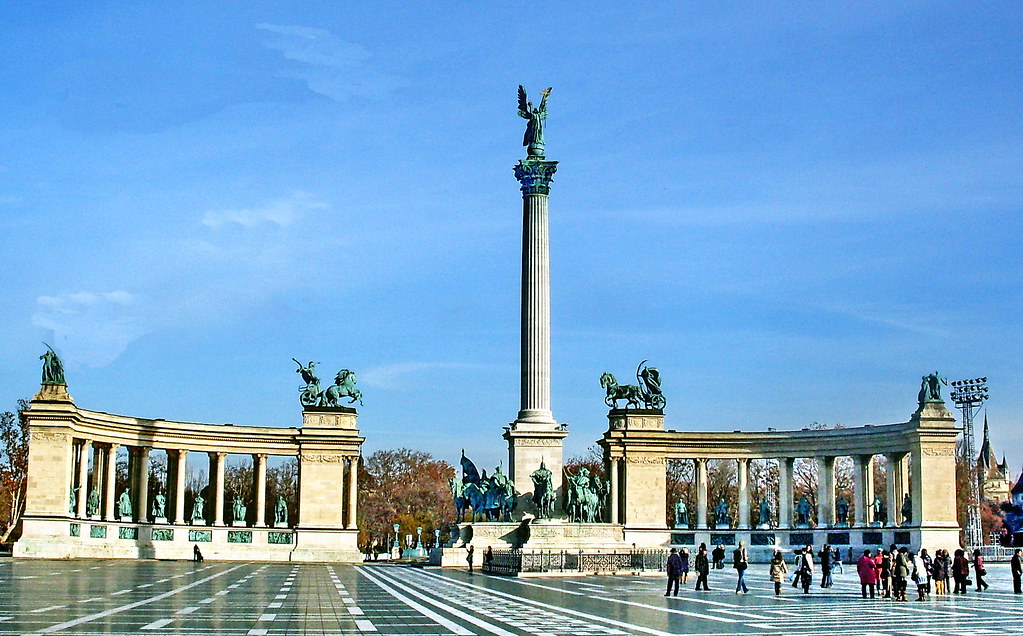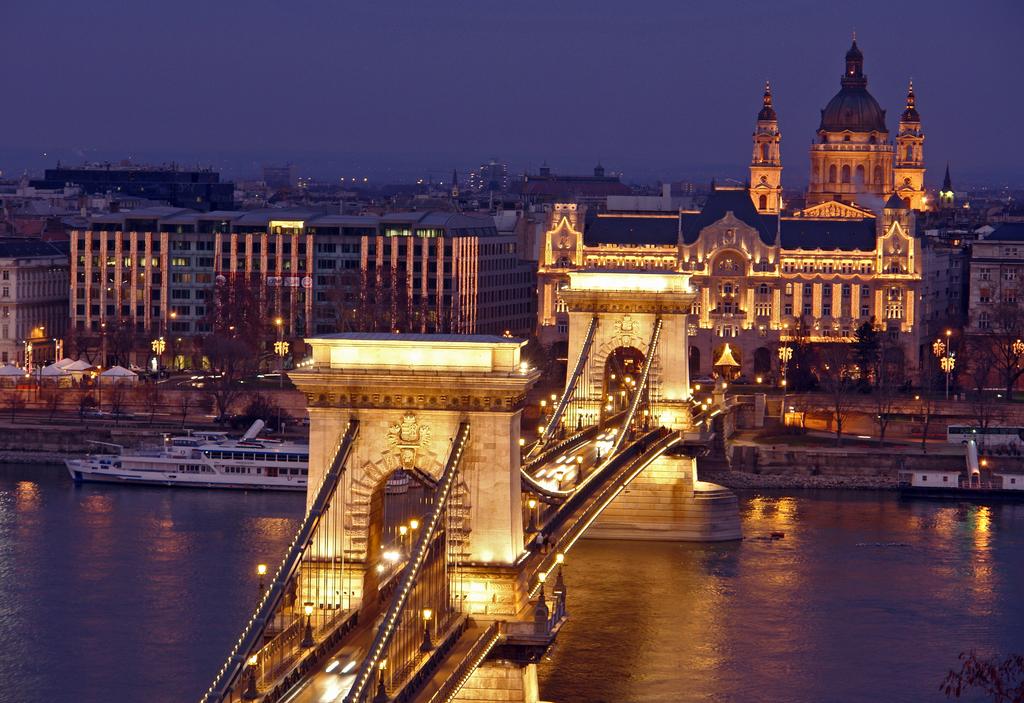The chain bridge is one of the main symbols of Budapest.
It stretches along the Danube River, located between Buddha and Pest (western and eastern districts of Budapest). Its total length is 375 meters.
The construction of the bridge, designed by the English engineer William Tierney Clark, began in 1840 and opened in 1849. This is the first permanent bridge to be built on the Danube coast in Hungary.
Its official name is Szechenyi Chain Bridge (a Hungarian politician named Istvan Szechenyi, who made a great contribution to the construction of the bridge).
The bridge was a symbol of progress, a national awakening connecting East and West.
Crossing the bridge, you will see sculptures of lions on both sides (sculptor Janos Marschalko).
Both sculptures were added to the bridge’s entire ensemble in 1852. It should be noted that the sculptures on the Chain Bridge are similar to the designs of the lion statues located on Trafalgar Square.
According to Hungarian legend, the lions on the Chain Bridge do not have a tongue, although the sculptures have a tongue and are simply not visible from below.
You may have noticed people approaching a bridge near these sculptures and watching the lions with great interest in their mouths.
Yes, there are many legends about the tongue of the lion, and according to one popular version, the sculptor forgot to sculpt it. It all started one day when a local cobbler noticed that lions had no tongue and talked about it all over the city.
The story even reached the sculptor's ear and threw him into confusion...
To prove his point, Marschalko went with his friends to see the real lion. After seeing the real lion, the sculptor and friends rejoiced because everyone was convinced that the work of art had no flaws.
Nevertheless, the city was still talking about it. One day, the sculptor, annoyed by this saying, called out to a passerby - your wife should have the same language as my lions.
The sculptor claimed that lions have a tongue but cannot be seen from the ground.
According to one legend, the sculptor told the locals that he would give 500 forints (Hungarian currency) to anyone who saw a real lion's tongue, who was sitting like a sculpture. Adventurous locals came to the circus and made sure that the sculptor was right. A happy artist spent money on charity.
As you cross the bridge, you will see the magnificent view of the Buda's castle, the fisherman's bastion, and the Matthias Church in all its glory. Be sure to look over the bridge and enjoy the breathtaking architecture cultivated on both sides of the Danube.







